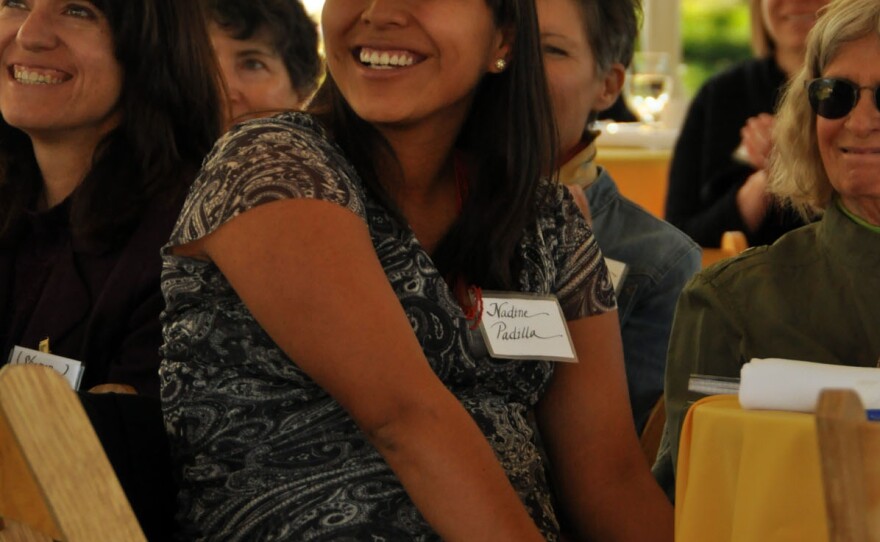It’s a sunny Saturday morning at the Randall Davey Audubon Center—way up Canyon Road in the foothills of the Sangre de Cristos. Jays, chickadees, and nuthatches are all keeping a noisy watch on the feeders—and the festivities.
Audubon New Mexico is honoring Rachel Carson, whose book, Silent Spring, was published 50 years ago.
In her book, Carson wrote of how the pesticide DDT was killing wildlife and endangering humans. In particular, birds exposed to DDT were laying eggs with shells so thin they broke before hatching time.
Carson’s book lead to a ban on DDT in the United States—and it inspired generations of scientists, writers, and activists
“In September, 1962 is when the book first came out, and it really revolutionized conservation and a lot of the work that’s been done in the last 50 years in the United States,” says Karyn Stockdale, executive director of Audubon New Mexico.
She explains that the Audubon Society’s beginnings in the 1880s were inspired by women. Women gathered in book clubs, tea clubs, quilt clubs—and the early bird clubs that led to creation of the Audubon Society.
In Boston, one group of women took a look at the fashion industry, she says. “There were fancy feathers, and eventually whole birds, that were put into lady’s hats, and they were appalled that it was decimating a lot of the populations of birds in America, and particularly in Florida.”
At the time, women didn’t have the right to vote, so instead they encouraged their husbands and other men to pass laws protecting birds—first in New York and Massachusetts, then in Congress.
At the event in Santa Fe, Audubon also honored one New Mexico woman, not for her work with birds, but uranium.
Nadine Padilla is of Navajo and Pueblo descent. She grew up near Bluewater Lake, in the heart of New Mexico’s uranium industry. Today, she works to protect the area’s groundwater from contamination. It’s tricky work, and oftentimes, members of the community—Anglo, Native, and Spanish—have fought amongst one another.
That’s changing, through the work Padilla does with MASE, the Multicultural Alliance for a Safe Environment.
“The greatest thing about MASE is that we have Navajo people traveling into Grants to testify on their neighbor’s issues, and in return, people from Milan will travel out to Crownpoint or Church Rock to testify in support of the community,” she says. “And I think that when regulators or elected officials see this, it really kind of shocks them that we’ve been able to unite so much around our common issues.”
Whether the issue is uranium mining or global climate change, many people are overwhelmed. Reaching out, working together, and hearing success stories are some of the ways women at the event say they overcome their discouragement.
“Well, after hearing these young speakers, I am optimistic,” says Santa Fe’s Gordie Holloway. “We can all do a small part, but the small parts put together make a big influence on how our environment is looked on and how we treat this earth that we’re all members of.”
Many things have changed since Audubon’s early days—and even since Carson was writing 50 years ago. But small actions—or long ago events—still resonate today.
In a few months, bald eagles will start looming above the Rio Grande. They’re common enough in the winter and during migration season that commuters can even spot them while crossing the Alameda Bridge in Albuquerque.
Bald eagles were nearly extinct in the 1960s. But Carson’s work on DDT led to a ban on the pesticide--and the eventual recovery of many bird species, including bald eagles.





